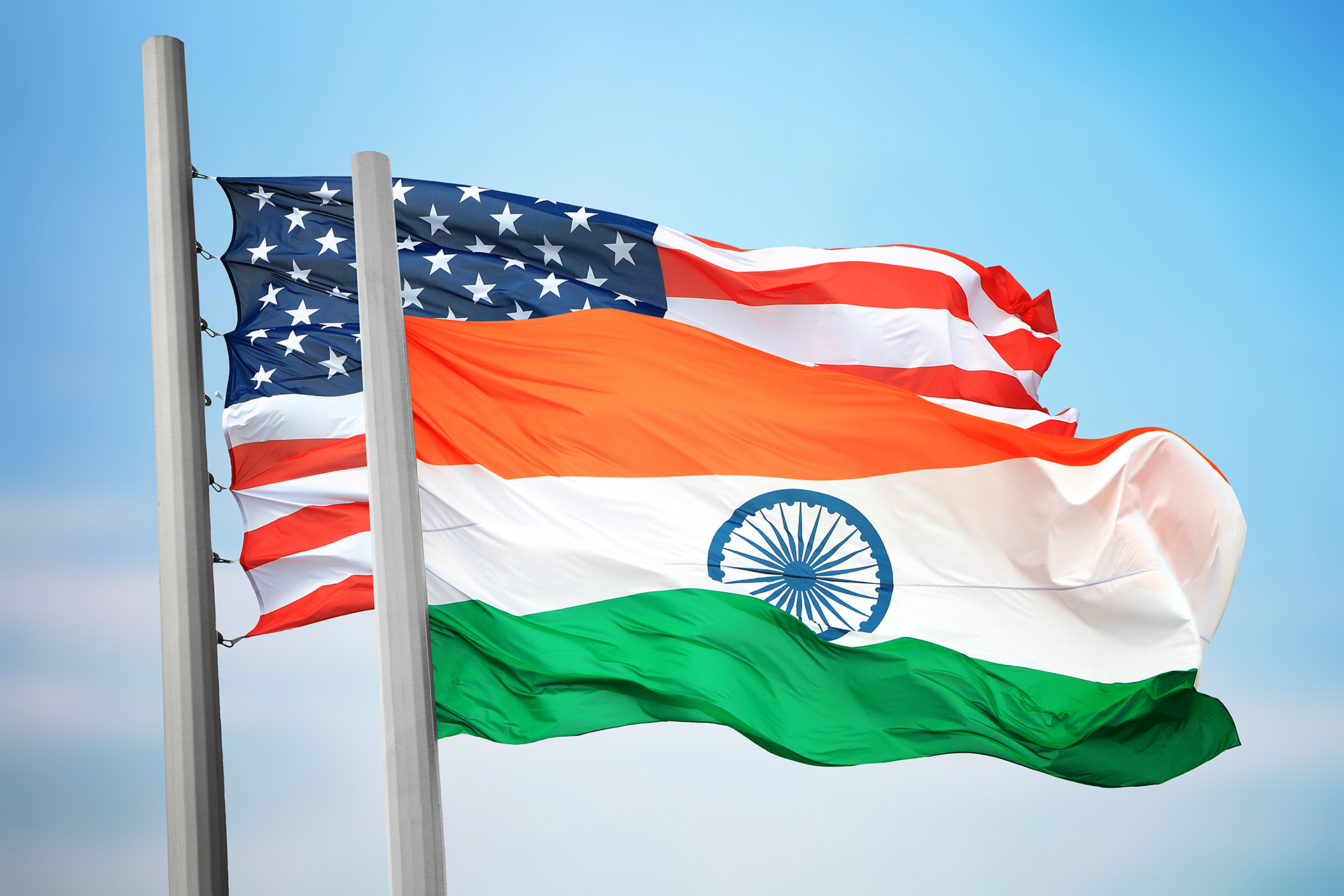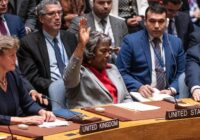India and Russia share historic ties. Soviet communism inspired India’s post-independence socialism. Russians sang songs from Raj Kapoor’s movies. In 1971, when India liberated Bangladesh, Soviet nuclear warships came to India’s defense against a US-UK fleet that sailed to support Pakistan. At the UN, Russia has been a reliable supporter of India on Kashmir and other issues. Therefore, even today, India displays rich sentimentality towards Russia.
In contrast, Russia’s neighbors do not harbor such warm feelings. The Poles are still traumatized by the Katyn massacre of 1940. Hungarians remember Soviet tanks rolling into Budapest in 1956. The Czechs can never forget how Moscow crushed the Prague Spring in 1968. After years of brutal Soviet rule, 14 former Soviet and Soviet-aligned republics joined NATO to seek protection against Moscow.
The Russia-Ukraine War is an unprovoked act of aggression. Historically, India has been close to Russia, including offering an Indian rupee trade settlement mechanism, but the time has come to put more daylight between New Delhi and Moscow.
The Russia-China dynamic is cause for worry
India often hides away from the memory of the 1962 war with China. In the war, Russia suspended the sale of military aircraft to India and dictated that India compromise on its border. Russia also told India that if it raised the matter with the UN, the USSR would be forced to support China.
2023 presents a tectonically different picture. Russia is now subject to more targeted sanctions than Iran, Venezuela, Myanmar and Cuba combined. Forced to tie the rouble to gold, the Russian economy is in a crisis. Although the Russian Central Bank sought to ban cryptocurrency in 2021, the country has now accepted crypto legitimacy in order to evade US sanctions. Also, Russia and Iran are investing an estimated $20 billion in a new 3,000 km trade route starting from Russia-occupied territories in Ukraine.
Han and Hindu Nationalism Come Face to Face
Russia’s financial system is now tied to China. It has its own domestic alternative to SWIFT — the System for Transfer of Financial Messages (SPFS), a Russian ruble-based system — which could become integrated with China’s much larger payment system, the Cross-Border Interbank Payment System (CIPS). Russia has the Mir card system for domestic payments and seeks to integrate Brazil, India, China and South Africa’s payment systems to promote use of rouble payments. China is also Russia’s largest trade partner in both exports and imports. Russia has prioritized the use of the Chinese renminbi for international trade and payment purposes. As Visa, Mastercard and Amex exited Russia, Russian banks found a lifeline for their credit cards in the Chinese-owned UnionPay. Furthermore, Russia has also passed a law to allow violation of patents of “unfriendly countries”.
The link between Russia and China is evident. This is a source of concern for India, which has a stagnant, if not deteriorating, relationship with China.
Outdated Russian military technology is also a worry
The Russia-Ukraine war has been an eye-opener for India. A war which was expected to last a week has drawn on for months, with no end in sight. This has brought with it another aspect of concern: arms.
India relies on outdated Russian Technology. NATO weapons (mainly US) and technology (e.g. AI, Big Data), have proved to be extremely resilient against outdated Russian weapons. The US states that Russia has a failure rate as high as 60% for some of its precision-guided missiles. This is a problem for India, where the share of Russian-origin weapons and platforms across armed forces is as high as 85%. This creates a serious supply chain issue for India, which the US claims they can help replace.
It is only logical that if India is to buy arms in the future, it should be from the US, Israel, UK, Italy or France. These present a better alternative to outdated Russian weapons, especially since Russia is lacking resources to back its supply chain. Alternatively, India could produce its own weapons in line with Prime Minister Modi’s Aatmanirbhar Bharat (self-reliant India) policy. Regardless, it is evident that India needs to move its military supply ties away from Russia.
Russia-China v the West
While we see that the China-Russia dynamic has strengthened, the US-China relationship is precarious. The US fears Chinese ascent via the Belt and Road Initiative (BRI) and is attempting to counter it via a similar G-7 infrastructure initiative. Ironically, the US is planning this while outsourcing its manufacturing including pharmaceuticals, electronics, plastics, automotive and textiles to China.
China accounts for one-fifth of global manufacturing and is the largest manufacturing nation in the world. China also requires US firms to transfer their technologies to Chinese companies for market access. Moreover, the benefits of trade have disproportionately accrued to senior corporate management and large shareholders, at the expense of US workers. Arguably, outsourcing manufacturing to China endangers US security which three US administrations have enabled. With the deteriorating US-China relationship, perhaps India can step in.
Is China’s Belt and Road Initiative Strategic Genius, Arrogant Overreach or Something Else?
India is vastly different from Russia and China. India is a secular democracy, the largest by population. There is a sharp contrast between the way Indians run their country and the way the Chinese and Russians run theirs. While India is a little politically chaotic, the freedoms that individuals in India enjoy are far above those experienced by individuals in Russia and China. China’s approach to the Uyghur Muslims and the Tibetans is nothing short of cultural genocide. China does not respect religion, while India is deeply religious. These aspects make India a more desirable political partner to the US.
China’s aggression on its borders with rival nations like India is matched by Russia’s aggression on its borders with Ukraine. Both nations want to restore the glory of their past. Russia is tied to its recent history as the USSR, wanting to bring back its former greatness. Similarly, still imprisoned by the legacy of Imperial China, China’s populist nationalism is inspired by its glorious memories. These remnants of the past are evident in Chinese and Russian foreign policy, which differ greatly from India’s.
The world is increasingly splitting into two economic and financial factions, one of Russia, China and its client states, and the other of the West. Russia’s clear friends at the UN voting with them include China, Cuba, North Korea, Iran, Syria and Vietnam (also in numerous border disputes with China). India scarcely has a choice of going with this motley lot versus the West, which for all its imperfections and double talk, still embodies the same humanitarian values as the Indian state.
Tawang Is the India-China Battleground for Tibetan Buddhism
India has to give up its sentimentality toward Russia, fix the supply chain issues for its armed forces, and consider how it can extract the best possible deal from the USA. India already has a dumbed-down “Asian NATO” type alliance called QUAD (Quadrilateral Security Dialogue) with the US, Japan and Australia doing joint naval exercises. It seeks to expand this to Quad Plus including South Korea, New Zealand, Vietnam, Brazil and Israel. However, this is not enough. What India needs with the US is a boots-on-the-ground agreement to supply US arms and forces in case of a war with China. This explicit security arrangement can be on a reciprocal basis. This would be a full-fledged Asian NATO equivalent.
Can the US be a viable alternative?
Indians do not trust the US or the UK. While distrust for the UK stems from 200 years of colonial rule, the US distrust is based on its geopolitical track record of sham wars in the Middle East. The US’s policy of starting wars to sell arms is also a contributing factor.
The US and its CIA have a track record of perpetuating evil, from selling Saudi arms to turn Yemen to dust, to sponsoring jihadi textbooks to Afghan kids to create fighters for Afghanistan. The US also has a history of spectacular failure in both Vietnam and Afghanistan achieving nothing in exchange for decades of war sponsored by American taxpayers and debt. The US is manipulated by its Arms and Israel lobbies, both wanting persistent war leading to the death, injury, and displacement of millions in the Middle East. It is incredible that Shia Iran supports Sunni Hamas, reflecting a hatred of the Muslim world to American politics in the Middle East. India has a prime reason to not trust the USA – US support for Pakistan in the Afghanistan War.
Furthermore, the US is no longer the superpower it once was. The US has sought to weaponize the USD, blocking off Russia’s access to its USD balances. A recent move by Saudi to sell China oil in RMB highlights the upcoming decline of the petrodollar. Countries no longer trust the US the way they used to, so why should India?
Nonetheless, in 2023, Indians appreciate US capital. The benefits of outsourcing seen in small Indian cities are manifold. Furthermore, in the US, Indians have succeeded spectacularly in CEO positions, underscoring the credibility of American meritocracy. India is a post-colonial country where the idea of a glass ceiling for Indians living abroad is very much entrenched. The success of Indian CEOs in America disproves this idea.
To make matters easier, the legal foundation of a US-India bond is already in place owing to the efforts of the Modi government. The Basic Exchange and Cooperation Agreement (BECA), the last of the key foundational agreements between India and the US, was signed in October 2020. Two other military agreements have also been signed: the Logistics Exchange Memorandum of Agreement (LEMOA) which was signed in 2016 and the Communications Compatibility and Security Agreement (COMCASA), signed in 2018. “BECA enables supply of high-end equipment as well as real-time intelligence and information, which will allow India to piggyback on American geo-spatial information to hit enemy targets with pinpoint accuracy.” Under US law, the signing of these agreements is mandatory for the US to enter military alliances related to the export of sensitive equipment.
The geopolitical environment is conducive to the strengthening of the US-India dynamic, but the time to act is now.
India could be a new manufacturing power
India has a lot to gain from a war between the US and China around a Taiwan invasion. The US would pass sanctions and withdraw all its outsourced manufacturing, likely moving most of it to India. Nonetheless, an early genuine Asian NATO formation would find India engaged in an expensive war in the South China sea, which is undesirable given the cost of post-COVID recovery. It also remains to be seen if the Ukraine war can be stopped and Russia can be reintegrated into the global financial system and world order. For example, Russia without Vladimir Putin would be another story altogether. These factors overhang India’s decision to enter into a long-term security arrangement with the US.
As US and China Clash, Taiwan Moves Closer to the Brink of Disaster
Regardless, India has to negotiate for an economic package to draw away manufacturing outsourcing from China to India’s smaller cities and towns which could offer similar cost advantages. India offers a skilled English-speaking working population and like the Chinese, it has fine engineering minds that can easily be upskilled. The US is already India’s largest trading partner. So deepening this economic relationship makes sense.
At the beginning of 2022, Russia’s share in India’s overall oil imports was 2% but, by Nov 2022, it was 12%. India has been accused of acting opportunistically for buying cheap Russian oil but the country still has a relatively low per capita income and needs to control inflation. Over time, there is no reason why this cannot be eventually replaced with oil imports from the US. The US can also help India sort out its supply chain issues for Russian weapons and platforms held by it. India’s need to reduce dependence on Chinese imports such as active pharmaceutical ingredients or API, smartphones, automobile components and telecom equipment is significant.
It is true that India has so far not succeeded in manufacturing. It still depends on China for up to 90% of ingredients for certain drugs. Although anti-dumping duties on some Chinese products like aluminum and chemicals have helped, India needs US help to emerge as a key part of the global supply chain.
What India needs to do
India’s success in developing infrastructure will prove key to its plans to replace China as the US’s manufacturing hub. Getting labor laws and logistics right to support special manufacturing zones/industrial clusters that provide the exact same competitive advantage that China currently provides, will also be of use. India’s state governments must provide subsidies like Chinese provincial governments do to promote manufacturing. These could “include free land, cheap capital, loans one may not have to pay back if things go wrong, guaranteed government purchasing and tax holidays.”
Chinese shipping is also heavily subsidized by the government allowing many high-volume sellers to ship small items free of charge all over the world. This creates a huge competitive advantage, and India needs to emulate some of these policies to compete and emerge as a manufacturing hub that rivals China. The US and Europe are trying to decouple from China. The West wants to de-risk supply chains and India must step up.China is the US’s only real competitor for global leadership. Therefore, the US has to commit to a deeper security and economic arrangement to counter China’s ascendency. With Pakistan’s economic implosion, China is now India’s Enemy Number 1. Therefore, the US and India have a natural strategic alignment. Both have to deal with China and have economic, military and geopolitical synergies that India must exploit judiciously.
The views expressed in this article are the author’s own and do not necessarily reflect Fair Observer’s editorial policy.
Support Fair Observer
We rely on your support for our independence, diversity and quality.
For more than 10 years, Fair Observer has been free, fair and independent. No billionaire owns us, no advertisers control us. We are a reader-supported nonprofit. Unlike many other publications, we keep our content free for readers regardless of where they live or whether they can afford to pay. We have no paywalls and no ads.
In the post-truth era of fake news, echo chambers and filter bubbles, we publish a plurality of perspectives from around the world. Anyone can publish with us, but everyone goes through a rigorous editorial process. So, you get fact-checked, well-reasoned content instead of noise.
We publish 2,500+ voices from 90+ countries. We also conduct education and training programs
on subjects ranging from digital media and journalism to writing and critical thinking. This
doesn’t come cheap. Servers, editors, trainers and web developers cost
money.
Please consider supporting us on a regular basis as a recurring donor or a
sustaining member.
Will you support FO’s journalism?
We rely on your support for our independence, diversity and quality.






